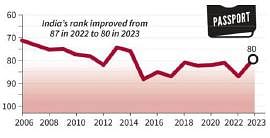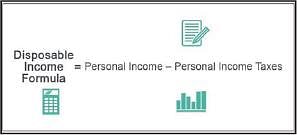UPSC CSE Complete Practice Test - 13 - UPSC MCQ
30 Questions MCQ Test - UPSC CSE Complete Practice Test - 13
Consider the following statements with reference to the Fragile X syndrome (FXS):
- It is the most prevalent inherited cause of mild-to-severe intellectual disability.
- There is no cure for the disease.
- It is an X-linked dominant condition with variable expressivity and reduced penetrance.
How many of the statements given above are correct?
Consider the following statements.
- India’s External commercial borrowings in rupees helps to promote the internationalisation of the rupee.
- For a currency to be considered a reserve currency, it needs to be fully convertible, readily usable, and available in sufficient quantities.
- India permits full capital account convertibility, without any constraints on the exchange of its currency with others.
How many of the above statements are correct?
| 1 Crore+ students have signed up on EduRev. Have you? Download the App |
The joint statement — ‘Horizon 2047, marks the 25th Anniversary of the Strategic Partnership between
Consider the following statements regarding Guillain-Barré Syndrome.
- Guillain-Barré Syndrome is a rare neurological disorder where the body’s immune system mistakenly attacks its own peripheral nerve cells.
- It often develops shortly after a person gets an infectious disease.
- A person with this syndrome will have difficulty speaking, walking, or performing other normal functions of the body.
How many of the above statements are correct?
Which of the following are identified as indirect farm subsidies provided by the Government?
- Minimum Support Price
- Subsidy on fertilizers and seeds
- Farm loan waivers
How many of the above statements is/are correct?
Consider the following statements regarding Lothal.
- Lothal was one of the southernmost sites of the Indus Valley civilization.
- It is declared as a UNESCO World Heritage Site.
- Lothal was one of the landlocked sites of the Indus Valley civilization.
How many of the above statements is/are correct?
Consider the following statements regarding the Electoral Bonds with reference to a political party?
- The Electoral Bonds shall be encashed by an eligible Political Party only through a Bank account with any nationalised Bank.
- The Electoral Bonds shall be valid for fi fteen months from the date of issue.
- If the Electoral Bond is deposited after expiry of the validity period, payment shall be made to payee Political Party after deducting 20% penalty.
- The Electoral Bond deposited by an eligible Political Party in its account shall be credited on the same day.
How many of the above statements is/are correct?
Which of the following statements is correct with reference to the Henley Passport Index?
- It is published by Henley and Partners.
- India was ranked 80th in the 2023 edition of the report.
- Japan dropped to the third place for the first time in last five years
Select the correct answer using the code given below:
Consider the following statements about ‘Cantonment’ boards:
- It is a purely military area where only military personnel and their families reside.
- It works under the administrative control of the Ministry of Housing and Urban Affairs.
Which of the statements given above is/are correct?
Contingent Reserve Arrangement (CRA) is related to additional liquidity protection for member-nations of which of the following?
In the context of Individual Satyagraha, who among the following was the first satyagrahi?
With reference to the Foreign travellers who visited India, consider the following pairs:
Foreign Travellers : Visited in the reign of
- Abdul Razzaq : Deva Raya II
- Domingo Pae : Muhammad Bin Tughlaq
- Marco Polo : Queen Rudramadevi
How many of the above pairs are incorrectly matched?
Consider the following statements:
Statement-I: Disposable income is derived by subtracting personal income tax payments from personal income.
Statement-II: It represents the income availableo individuals for consumption or saving after annual expenditure.
Which one of the following is correct in respect of the above statements?
Consider the following statements:
- The gametes of threatened species can be preserved in viable and fertile condition for long periods using cryopreservation techniques.
- The plants can be propagated using tissue culture methods.
Which of the above statements is/are incorrect?
Regarding the Buddhist texts, consider the following statements:
- Buddha's teachings were first transmitted orally and none of his speeches were written during his lifetime.
- The ort hodsfx Buddhist texts were compiled in chaste Sanskrit language.
- Vinaya Pitaka, which contains the monastic rules, was compiled during the Second Buddhist Council at Vaishali.
How many of the above statements is/are correct?
Consider the following statements:
- It deals with grammar and poetics.
- It was composed between first century BCE and fourth century CE
- It was part of sangam corpus
- It was composed by Tholkappiyar
How many of the above statements are correct regarding Tolkappiyam ?
Which of the following statements regarding UNESCO’s Man and the Biosphere Programme (MAB) program is incorrect?
The Madhuban, Sonepath and Banskhera inscriptions are associated with which one of the following rulers?
In 1510, Goa was captured from the Sultan of Bijapur by which of the following Portuguese viceroys?
Arrange the following events in chronological order of their occurence.
- Passing of Pakistan Resolution by Muslim League
- Launch of Individual Satyagraha movement to affirm the rights to speech
- Proposal of August Offer
Select the correct answer using the code given below.
Which of the following statements is correct with reference to the steel industry in India?
- India is among the largest producers of steel in the world.
- India is home to the seventh largest reserves of iron ore in the world.
- Rajasthan is the largest producer of steel in the country.
Select the correct answer using the code given below:
Consider the following statements:
- Gross domestic product (GDP) in purchasing power standards measures the volume of GDP of countries.
- It is calculated by dividing GDP by the corresponding purchasing power parity (PPP) that is an exchange rate that removes price level differences between countries.
Which of the above statements is/are correct?
Consider the following:
- Carbonation
- Frost action
- Oxidation
- Mass wasting
How many of the above are examples of chemical weathering?
With reference to the Tribunals, consider the following statements:
1. These are governed by specifi c laws, each defi ning their jurisdiction, composition, powers, and functions.
2. They are typically headed by a chairperson, who is usually a retired judge of the Supreme Court or a High Court. 3. Tribunals have quasi-judicial powers.
Select the correct answer using the codes given below.
Consider the following statements regarding the rule of law in India:
1. All laws and government activities may or may not be consistent with the provisions of the Constitution.
2. The rule of law guarantees that all individuals are equal before the law.
3. Judiciary acts as a check on the other branches of government.
How many of the above statements are correct?
Who among the following rulers of the Pallava Empire constructed a temple oriented to the east, facing the ocean, and housing two Shiva shrines and one Vishnu shrine?
Consider the following statements regarding the Fundamental rights in India:
1. They aim to eliminate historical inequalities and promote a more inclusive society.
2. These rights act as a check on the abuse of power by the government and its agencies.
3. They refl ect the principles of the Universal Declaration of Human Rights and other international conventions, reaffi rming India’s commitment to upholding human rights.
How many of the above statements are correct?
The terms such as vanikan, chattan and nigama that appear in the Tamil-Brahmi inscriptions during the sangam age refer to :
Consider the following statements:
Statement-I: In order to address the welfare and progress of the scheduled tribes, each state with scheduled areas is required to establish a Tribes Advisory Council.
Statement-II: In states where scheduled tribes exist but scheduled areas are absent, the President can direct the establishment of a Tribes Advisory Council.
Which one of the following is correct in respect of the above statements?
Consider the following statements with reference to the United Nations Refugee Convention, 1951:
- Non - refoulment is the core principle of the 1951 Convention.
- India has recently signed the convention.
Which of the statements given above are correct?




















